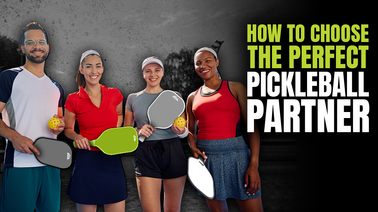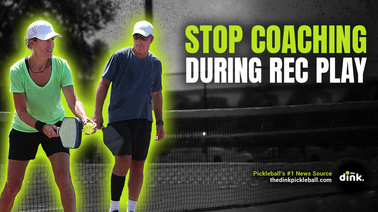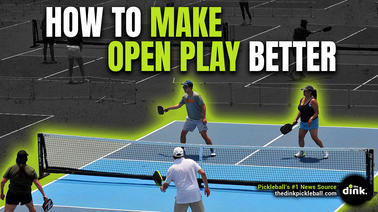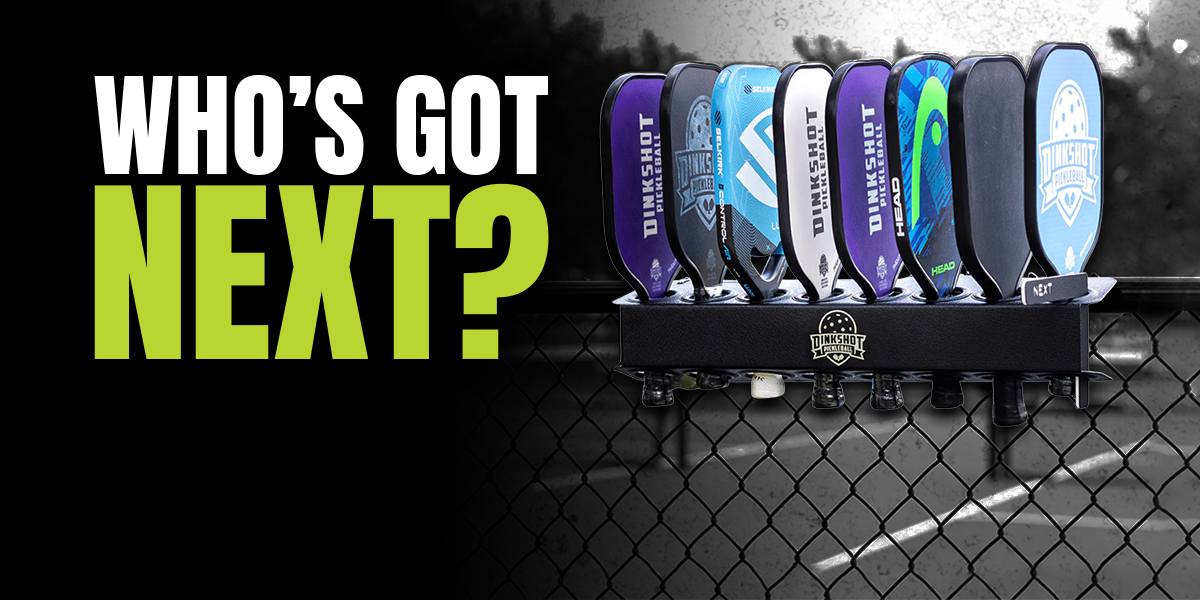
The Best Paddle Queuing and Rotation Methods for Open Play Pickleball
One of the unique parts of pickleball is the amount of participation that happens at open play (some call it paddle stack).
In case you're unfamiliar, open play is typically the same across the country – a group of people put their paddles in some order that dictates who is up next when a court opens up.
However, while the basis of open play is the same, we are finding that how the paddles and players are lined up – or queued – can vary greatly depending on your area and the competition around you.
We've compiled a list of the different paddle queuing (stacking) methods we've discovered and the pros and cons of each.
If any of these sound interesting to you, consider trying them out on your local courts.
ARMRA: Take Your Dink Game To The Next Level

If you want to achieve ultimate performance, you’ve got to harness your body’s untapped potential. So why not go to the source to make sure that the health of your mind and body is at its peak?
ARMRA Colostrum is premium bovine colostrum concentrate, nature’s bioactive whole food, and an unrivaled powerhouse of cellular nutrition with over 400 bioactive nutrients. It works at the cellular level to strengthen your body’s barriers, maximize your endurance, and stamina, help build your lean muscle, and accelerate recovery time … and that’s just scratching the surface.
By addressing your body’s foundation, ARMRA unlocks additional benefits across your immunity, gut health, metabolism, hair growth, and more.
We’ve secured an exclusive offer for readers of The Dink. Get 15% off your first order here by entering “DINK” at checkout.
Option 1 - Four on, four off
The most popular and common method is simply a first-come, first-serve queue. Typically, there is a paddle rack – usually a long piece of wood or PVC pipe with slits to put paddles in – outside a fence, which dictates when four players come off, the next four on the rack go on.
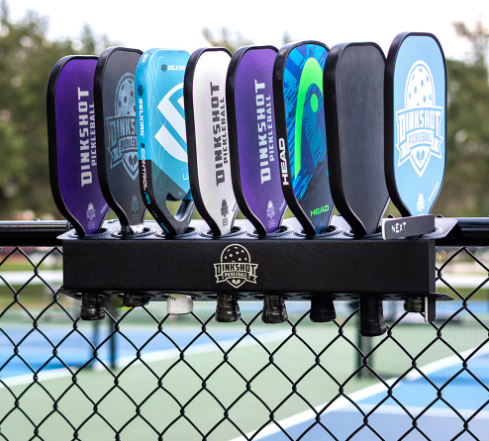
The players coming off put their paddles at the end of the queue.
Pros
- Simple and easy to follow
- Requires little explanation
- If you want to sit out a round or work into a different group, you can place your paddle farther back
- It's obvious to everyone who is up next
Cons
- Doesn't take skill level into account
- Can get stuck with the same opponents through multiple matches (this can be good, bad, or very bad)
- Someone can move your paddle without you knowing (to another foursome or even steal it)
- Allows players to develop cliques

Option 2 - Challenge courts
Another increasingly common way of dictating open play is to offer up challenge courts (or a challenge rack).
In this iteration, the two winners on a court (usually designated by the players) get to stay on, while the losers return to the end of the queue. However, the two winners must split up – meaning they can't be on the same team for the next game.
The next two players up in the queue become their teammates.
This allows a reward for winning and, in theory, allows the better players to continue playing beyond one game.
Pros
- If you're one of the better players, this provides you with more court time
- Assuming you have a decent number of courts (compared to the number of players), this can be a great way to have more competitive matches
- This encourages higher-skilled players to come to open play more regularly
Cons
- If your courts are limited, assigning one as a challenger court may not make sense
- It can take longer to play a match on these courts, since only two come off and go on at a time
- It prioritizes winning – which we don't always have control over since our partners are typically random
- You have to explain this system fairly often for those who are new or come from other systems – not everyone reads the signs
Option 3 - Beginner, intermediate, and advanced
One reason many players dread open play is getting "stuck" with beginners. While most are willing to play a game or two, no one wants to spend their entire time at the courts showing someone how to play correctly or playing far "below" their skill level to make the games more competitive.
A potential solution is to have a method separating beginner, intermediate, and advanced players.
This could be a rack with clearly defined skill levels written somewhere, or some type of marked basket or box for players to stack their paddles in.

Pros
- This allows like-skilled players to play against each other more often
- Simple to follow
- Can designate specific courts for each skill level
Cons
- Since these rely on self-assessment and self-regulation, players can place their paddle in the section above their actual skill level, causing an imbalance in games
- If courts aren't designated for beginner, intermediate, or advanced, it can be confusing who is actually up next
- If someone refuses to admit they belong in a lower skill level, it can create an awkward situation where people hold on to their paddles or refuse to play with certain people
Option 4 - Waterfall or ladder
The final system worth mentioning is a waterfall or ladder method (it's called different things in different areas).
Essentially, if you have the perfect number of courts for the number of players you have (meaning no one really has to wait), then you can have the winners of a court move "up" to the next court and the losers move "down" a court.
You would determine ahead of time which way the winners and losers go after each game. Both winning and losing teams should split (meaning they have a different partner for the next game).
Pros
- This ensures that the same foursome is not always stuck playing together and instead helps you mix in with other players
- It keeps the games flowing – usually, there are only a few minutes between games
- Winning with someone means you play against them the next game, which in theory, makes the game more competitive
Cons
- If there are players waiting to play, this system doesn't work
- If you don't have a number of players divisible by four then it doesn't work
What do you think? Will you try one of these at an open play near you or do you have a different system you like to use?






